Hosta "Brim Cap": description, planting, care and reproduction
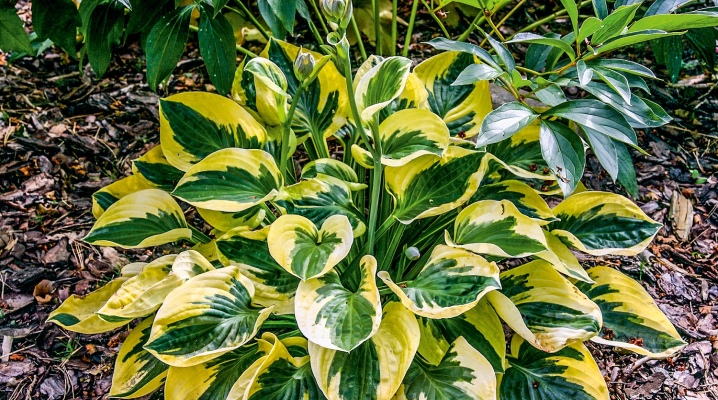
The hosta plant, which attracts attention with its beautiful lush foliage, is increasingly becoming an object of interest for landscape designers. Culture is no less popular in gardening circles - it is appreciated for its undemanding care. Hybrid species, for example, "Brim Cap", are just as picky.
Description
Variety Brim Cup is an aesthetic, sparse shrub, reaching a height of 40 cm. Leaf plates measuring 16x13 cm are distinguished by a somewhat elongated shape, the color of the foliage is dark green with a bluish tint and a yellow frame, which gradually acquires a soft cream color. The inner part of the sheet is characterized by a matte surface and a bluish tint.
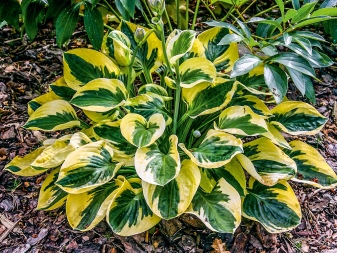
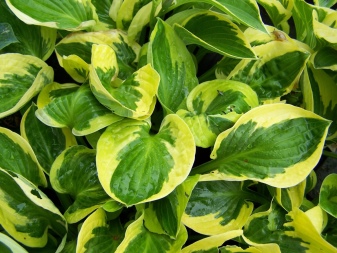
Flowering occurs in mid-July. The flowers are funnel-shaped, often collected in a one-sided inflorescence. The blossoming buds are light blue in color, and the opened flowers turn white. Flowers are located on stems up to 45 cm long. The variety is frost-resistant and can be grown in most regions of Russia.
When planting in a harsh climatic zone, it is important that in the summertime the sun's rays illuminate the plant for at least a couple of hours in the morning.


Young specimens have a more impressive appearance. They look great in both single and collective plantings. Suitable for curbs, ridges, mixed groups. Beautiful near water bodies.
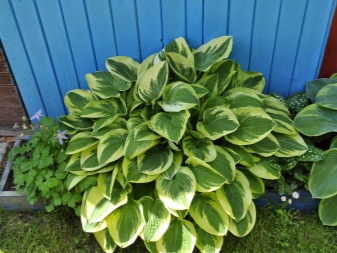
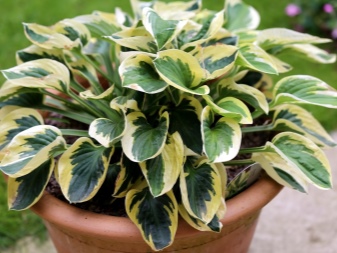
How to plant?
Variety "Brim Cap" grows well in moist, slightly acidic soils - this fact should be borne in mind when choosing a place for planting. And also it should be a shaded area, sheltered from gusts of wind. For successful cultivation, fertile, drained soil is suitable. The most favorable time for disembarkation is the first days of September. The planting process is as follows:
- dig up the flower bed;
- dig small planting holes, keeping a gap of about 50 cm between them, as the culture grows well;
- lay a drainage layer on the bottom;
- add fertilizer;
- place the seedlings on top, gently straightening the root system;
- moisten the planting site well;
- mulch the area, for example, with sawdust, crushed tree bark or peat.

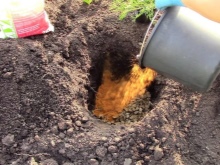
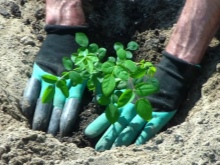
How to care?
Caring for a hybrid variety is not difficult, although some rules should be followed. A competent approach to cultivation will ensure lush and abundant flowering. When caring for a plant, consider a number of points.
- Watering. The soil should be moistened often with large portions of water, since it is a moisture-loving culture. It is advisable to carry out the procedure in the morning. At the same time, do it in moderation to avoid stagnant water.
- Fertilizers. The specimens that are planted in depleted soil need additional fertilizing. Usually fertilizers are applied 3 times per season. Rotted organic matter and ready-made commercial mixtures for decorative deciduous crops are suitable as additional nutrition.
- Loosening. Loosen the soil very carefully as the root system is close to the ground. Removing the weeds is usually unnecessary since the plant itself does not allow the weeds to develop.
- Pruning. This procedure is carried out in the autumn. The process involves removing the peduncles, while leaving the leaves.
- Transfer. The culture needs replanting every year, this is done in the fall.


How to propagate?
For breeding, you can use planting material or seedlings from a special nursery, you can ask for it from your neighbors, if such a flower is already growing on their site, and it is possible to propagate it independently in one of the ways.
- Division of the bush. This procedure takes place in April or September. First, an adult plant is watered abundantly, then removed from the ground and divided into parts with a sharp knife or shovel. Each beat must contain at least 2 sockets. The resulting parts are planted at a distance of 40 cm from each other.
- Cuttings. The essence of the method consists in cutting off the appendix, which has a root zone. There is no need to dig up the plant itself. The stalk is planted in a shaded area, and covered with a plastic cup on top. Within a few days, the sprout will be ready for transplantation to a permanent place.
- Sowing with seeds. This is the rarest and most unpromising method of reproduction, since the seeds of this culture are characterized by low germination. The resulting planting material must be soaked in a solution of a growth stimulant, and then sown in small containers and covered with foil. For several weeks, the planting site is regularly moistened, and soon the first shoots can be observed.
See below for more details.







































































































The comment was sent successfully.